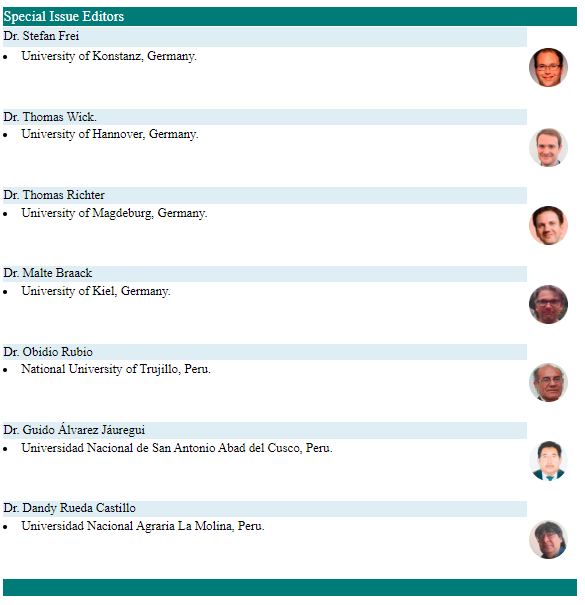Equivalence of the stability of discrete-time Markov jump linear systems
DOI:
https://doi.org/10.17268/sel.mat.2020.02.05Palabras clave:
Stability, discrete-time Markov jump linear system, Markov chainResumen
This paper investigates the stability of discrete-time Markov jump linear system of second-order, this type of system is similar to the family of discrete-time Markov jump linear system it is known in classical literature as MJLS. We present some consistent stability definitions for the system, where these types of stability are equivalent as long as the state space Markov chain is finite. In addition, a computational test is presented to analyze the stability of the system. The result is a generalization of classical theory, this implies a contribution to the theory.
Citas
Li X, Hui D, Lai X, Yan T. Power quality control in wind fuel cell battery hydrogen electrolyzer hybrid microgrid power system. In: Ognyan Ivanov editor. Applications and Experiences of Quality Control. Rijeka: INTECH; 2011. p. 579-594. Avalible form: https://www. intechopen. com /books/ applications-and-experiences-of-quality-control/power- quality- control-inwind-fuel-cell-battery-hydrogen-electrolyzer-hybrid-micro-grid-power-system
Ugrinovskii V, Pota HR. Decentralized control of power systems via robust control of uncertain Markov jump parameter systems. Int. J. of Control. 2005; 78(9):662-677.
Meskin N, Khorasani K. Fault detection and isolation of discrete-time Markovian jump linear systems with application to a network of multi-agent systems having imperfect communication channels. Automatica. 2009; 45(9):2032-2040.
Gray WS, González OR, Dogan M. Stability analysis of digital linear flight controllers subject to electromagnetic disturbances. IEEE Trans. on Aerospace and Electronic systems. 2000; 36(4):1204-1218.
Li J-R, Sculley J, Zhou, H-C. Metal–organic frameworks for separations. Chem. rev. 2012; 112(2):869-932.
Sworder D, Rogers R. An LQ-solution to a control problem associated with a solar thermal central receiver. IEEE Trans. on Automatic Control. 1983; 28(10):971-978.
Tesfaye S, Boulton AJ, Dyck PJ, Freeman R, Horowitz, M, Kempler P, Bernardi L. Diabetic neuropathies: update on definitions, diagnostic criteria, estimation of severity, and treatments. Diabetes care. 2010; 33(10):2285-2293.
Blom HA, Bar-Shalom Y. The interacting multiple model algorithm for systems with Markovian switching coefficients. IEEE trans. on Automatic Control. 1988; 33(8):780-783.
Brewer J. Kronecker products and matrix calculus in system theory. IEEE Trans. on circuits and systems. 1978; 25(9):772-781.
Blankenship G. Stability of linear differential equations with random coefficients. IEEE Trans. on Automatic Control. 1977; 22(5):834-838.
Feng X, Loparo KA, Ji Y, Chizeck HJ. Stochastic stability properties of jump linear systems. IEEE Trans. on Automatic Control. 1992; 37(1):38-53.
Chizeck HJ,Willsky AS, Castanon D. Discrete-time Markovian-jump linear quadratic optimal control. Int. J. of Control. 1986; 43(1):213-231.
Ji Y, Chizeck HJ. Controllability, observability and discrete-time Markovian jump linear quadratic control. Int. J. of Control. 1988; 48(2):481-498.
Fang Y, Loparo KA. Stochastic stability of jump linear systems. IEEE trans. on automatic control. 2002; 47(7):1204-1208.
Costa OLV, Fragoso MD, Marques RP. Discrete-time Markov jump linear systems. New York: Springer Science & Business Media; 2005.
Descargas
Publicado
Cómo citar
Número
Sección
Licencia
Los autores/as que publiquen en esta revista aceptan las siguientes condiciones:
- Los autores/as conservan los derechos de autor y ceden a la revista el derecho de la primera publicación, con el trabajo registrado con la licencia de atribución de Creative CommonsAtribución 4.0 Internacional (CC BY 4.0) , que permite a terceros utilizar lo publicado siempre que mencionen la autoría del trabajo y a la primera publicación en esta revista.
- Los autores/as pueden realizar otros acuerdos contractuales independientes y adicionales para la distribución no exclusiva de la versión del artículo publicado en esta revista (p. ej., incluirlo en un repositorio institucional o publicarlo en un libro) siempre que indiquen claramente que el trabajo se publicó por primera vez en esta revista.
- Se permite y recomienda a los autores/as a publicar su trabajo en Internet (por ejemplo en páginas institucionales o personales) antes y durante el proceso de revisión y publicación, ya que puede conducir a intercambios productivos y a una mayor y más rápida difusión del trabajo publicado(Consultar: efecto del acceso abierto).













